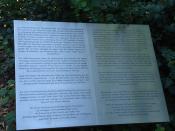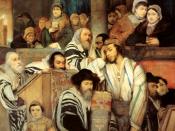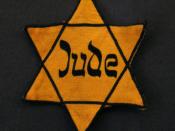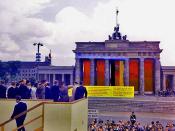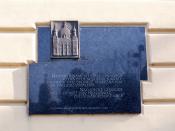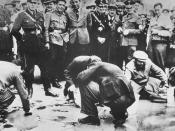The Power of Costumes Traditional forms of power, whether they're political, military, or religious get their power from many places. Throughout the history of human kind, much philosophizing and speculating has been done on the sources of said power. In the film, "Train of Life", ironic or "upside-down" imagery is often used as a means for characters in the film to gain power or at least stay connected to traditional religious authority. The "upside-down" imagery weakens traditional forms of power and authority by reducing authority to little more than costumes, titles, images, and objects.
The power possessed by the Nazis is destabilized by the ease with which fake Nazi uniforms and symbols fooled real Nazis. It was simple to dress some of the Jews from the town as Nazis, such as Mordechai, and possess much of the power that true Nazis had. An example of this is the scene in which Mordechai orders the Nazis to turn over their Jewish prisoner, and subsequently he manages to make the Nazis serve them all food.
The image of Nazis feverishly bringing food to escaping Jews certainly displays a weakening of power. Towards the end of the movie, the train is stopped by a bunch of people who look to be Nazis. Despite the fact that they are gypsies, the mere act of dressing like Nazis gave them the power to stop the train and inquire about the passengers and the train's purpose. While Nazism and its power seems to be attained merely through the act of donning a uniform, the same cannot be said about Judaism.
The Jews in "Train of Life" cling to their religious symbols despite unreasonable risks to their people's lives. The Jews went out of their way to attach Jewish symbols to everything, including the act of placing mezuzahs underneath the swastikas on the train, and Mordechai wearing the Jewish tassels underneath the Nazi uniform. These acts seem like a great risk, as the Jewish symbols would be easily spotted by any real Nazi who inspects the train and or the uniforms. Including the Jewish symbols reduces the Jewish faith to mere symbols and objects. The "power" incurred through Judaism is not only mezuzahs and tassels.
Shlomo, the town fool, is at times the wisest person on the train. Shlomo said that he wanted to be a Rabbi, but since there already was one in the shtetl, he became the town fool. The mere brand of "fool" hinders Shlomo, in that other people don't take him and his ideas seriously. But, because of his wisdom, people eventually listen to and agree to his ideas, such as the entire exodus of the shtetl.
The "upside-down" imagery illustrates that traditional forms of power are easily weakened, especially through the use of costumes and objects. The power of a Nazi is acquired through the uniform, religious symbols seem to have inherent power, and the title "fool" can be given even to a wise man.
